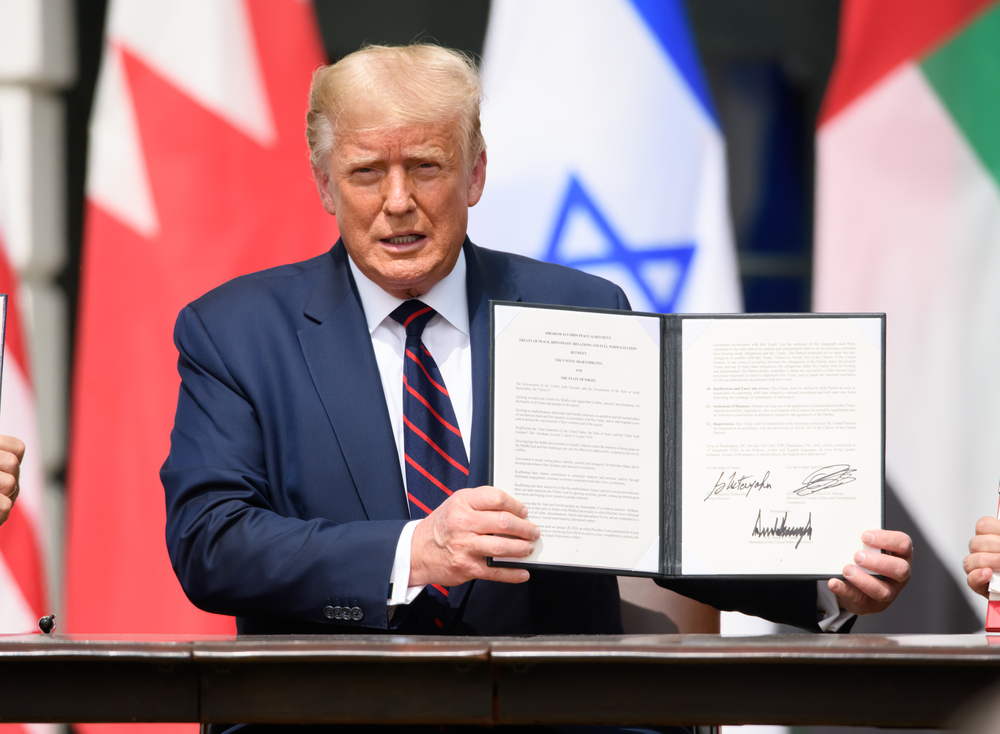TrumpRx and Pfizer: A Political Gamble to Lower U.S. Drug Prices

The White House’s unveiling of “TrumpRx” a federal, direct-to-consumer (DTC) platform paired with a headline-making pricing deal with Pfizer marks one of the most ambitious and politically calculated healthcare initiatives in recent history. For decades, Americans have grappled with drug costs that tower above those faced by patients in other developed countries. The promise of TrumpRx is straightforward: a government-backed website that allows Americans to buy certain brand-name medications directly from pharmaceutical companies at steep discounts, bypassing the complex network of middlemen who have traditionally influenced pricing. At the heart of the announcement was Pfizer, the pharmaceutical giant that agreed to slash prices on select medications, in some cases by as much as 80 percent, and commit to a pricing model that ensures U.S. patients pay no more than citizens in other wealthy nations. President Trump stood side by side with Pfizer CEO Albert Bourla, Health Secretary Robert F. Kennedy Jr., and CMS Administrator Mehmet Oz to declare victory over what he has long described as global freeloading, positioning this as a breakthrough not just in healthcare but in his broader “America First” economic vision.
Yet, beyond the polished optics and fiery rhetoric, the TrumpRx initiative raises profound questions about the mechanics of drug pricing, the sustainability of such agreements, and the real beneficiaries of this bold experiment. While uninsured Americans stand to gain significant relief, experts caution that for the majority of patients covered by insurance or federal programs, the benefits could prove underwhelming. Furthermore, the heavy reliance on tariffs and coercion as negotiation tools may set off ripple effects both domestically and internationally, potentially destabilizing global drug markets. TrumpRx is therefore more than a healthcare policy it is a political gamble that intertwines economic strategy, trade warfare, and electoral branding. Whether this gamble pays off in the long run remains to be seen, but its immediate impact has already shifted the discourse on drug pricing in ways no previous administration has managed.
What Is TrumpRx?
TrumpRx is envisioned as a dual-pronged initiative, designed to tackle high drug prices through both direct consumer access and international price benchmarking. The first prong is the launch of TrumpRx.gov, a government-run portal that links consumers directly to pharmaceutical manufacturers for discounted purchases. The second prong is the “most-favored-nation” (MFN) pricing model, which compels companies to align their U.S. prices with those in other wealthy nations such as Canada, Germany, and the United Kingdom. In theory, this prevents Americans from continuing to pay inflated costs that subsidize cheaper healthcare elsewhere. The Trump administration has positioned these mechanisms not only as tools of consumer relief but also as instruments of economic justice, arguing that Americans should no longer bear the global burden of research and development costs.

The mechanics of the program, however, are more complex than the announcements suggest. While the portal offers a simplified vision of patients purchasing drugs at lower prices, the reality depends heavily on the participation of drugmakers and the precise terms of negotiated agreements. Pfizer, as the first company to sign on, has agreed to make much of its portfolio available at discounted rates, including drugs like Xeljanz, Zavzpret, and Eucrisa. Yet the discounts apply primarily to uninsured patients paying out-of-pocket, leaving insured patients who already pay low co-pays largely unaffected. Moreover, the MFN pricing model relies on the assumption that companies will willingly forgo higher profits in the U.S., an assumption that may not hold once initial political pressure fades. What TrumpRx represents, then, is an ambitious trial balloon: a hybrid of direct-to-consumer innovation, tariff-driven coercion, and symbolic politics that may either reshape the system or reveal the limitations of headline-driven reform.
Pfizer’s Incentives: Rescue, Reposition, Or Public Relations?

Pfizer’s decision to embrace TrumpRx can be viewed as a blend of pragmatic survival and strategic repositioning. Facing the prospect of a 100 percent tariff on branded drugs manufactured abroad, the company calculated that concessions were preferable to confrontation. By agreeing to MFN pricing and announcing a $70 billion domestic investment in research and manufacturing, Pfizer not only secured a three-year grace period from tariffs but also earned valuable goodwill from an administration eager to tout corporate compliance as patriotic sacrifice. For Pfizer, this is as much about optics as it is about economics: being first to the negotiating table gives the company an aura of responsibility and leadership at a time when the pharmaceutical industry is under intense public scrutiny.
From a financial perspective, Pfizer’s gamble appears relatively low-risk. Analysts note that the discounts announced apply mostly to Medicaid and direct cash purchases, sectors that already operate with significant rebates and where patient populations are smaller compared to those covered by private insurance. As a result, the real financial impact on Pfizer’s bottom line may be modest, especially compared to the catastrophic losses the company could face under sweeping tariffs. Indeed, markets responded positively to the deal, with Pfizer’s stock climbing by more than six percent after the announcement. By playing ball early, Pfizer has effectively insulated itself from harsher regulatory consequences, positioned itself as an industry leader, and limited the damage to its financial outlook all while earning public praise for supposedly prioritizing patients over profits.
That said, critics argue that Pfizer’s concessions are more symbolic than substantive. While the company has agreed to provide steep discounts on a handful of drugs, these represent a fraction of its overall portfolio. Furthermore, because most insured patients already pay minimal co-pays, the headline numbers on discounts may not translate into widespread consumer relief. In this light, Pfizer’s participation could be seen less as an altruistic pivot toward affordability and more as a savvy political maneuver to maintain influence, avoid punitive tariffs, and capitalize on positive publicity. The company has, in essence, transformed a political crisis into a financial and reputational opportunity.
Who Benefits And Who Probably Doesn’t

At first glance, TrumpRx seems like a lifeline for patients struggling to afford high-cost medications. The promise of discounts up to 80 percent sounds revolutionary in a country where millions of people report skipping prescriptions due to cost. For uninsured Americans, who often face the most crushing out-of-pocket expenses, TrumpRx could indeed be life-changing. A patient paying $6,000 per month for a drug like Xeljanz could suddenly face far more manageable expenses, potentially saving tens of thousands annually. These savings are tangible, immediate, and politically powerful.
However, when viewed through the broader lens of the healthcare system, the benefits appear unevenly distributed. Most Americans roughly two-thirds of the population are covered by private insurance. These patients already benefit from negotiated rates, co-pays, and assistance programs that keep out-of-pocket expenses far lower than the advertised list prices. For them, TrumpRx may provide little to no change, despite the bold promises made by the administration. Even in Medicaid and Medicare channels, where the government is a major purchaser, discounts may not generate significant new savings, since many of these programs already secure lower rates through rebates and statutory protections.
Health-policy experts caution that the program risks functioning more as a branding exercise than as systemic reform. By naming the platform TrumpRx, the administration has created an initiative where political optics are inseparable from policy outcomes. This branding amplifies the stakes: if consumers do not experience meaningful relief, the program risks being remembered less as a breakthrough and more as a political stunt. Critics have also pointed out that the initiative sidesteps deeper structural issues in drug pricing, such as patent monopolies, the role of pharmacy benefit managers, and the lack of transparency in rebate negotiations. Without addressing these factors, the savings generated by TrumpRx may remain marginal for most households, leaving the underlying inequities in place.
The Political Calculus: Legacy, Optics, and Leverage

TrumpRx is a policy initiative tightly woven into a political strategy. By naming the website after himself, President Trump has tied its success directly to his legacy. The visual of the president standing with Pfizer’s CEO and senior health officials was carefully staged to reinforce the narrative of a leader taking on entrenched industries and winning. For a president seeking reelection, few issues resonate more strongly with voters than the high cost of healthcare. Forcing a major pharmaceutical company to concede even partially provides a potent campaign talking point that appeals to both populist and reform-minded constituencies.
The use of tariffs as leverage adds another dimension to the political calculus. Trump has long touted tariffs as a tool to correct global imbalances, from steel to agriculture, and applying the same strategy to pharmaceuticals reinforces his America First brand. By threatening a 100 percent tariff on branded drugs, the administration created a high-stakes game of chicken with Big Pharma, one that Pfizer opted not to play. This display of brinkmanship demonstrates to voters that the administration is willing to use every tool at its disposal to fight for American consumers, even if the actual policy outcomes fall short of transformative change.
Yet this high-stakes political theater comes with risks. If other companies do not follow Pfizer’s lead, TrumpRx may be remembered as a one-off victory rather than a systemic breakthrough. Moreover, if patients do not feel tangible savings at the pharmacy counter, the administration could face backlash for overpromising and underdelivering. By branding the initiative so personally, Trump has magnified both the potential rewards and the potential risks. Success would cement his legacy as the first president to wrest meaningful concessions from Big Pharma; failure would leave TrumpRx as a cautionary tale of political overreach.
Economic Risks And International Spillovers

The economic and geopolitical ripple effects of TrumpRx extend far beyond U.S. borders. For decades, pharmaceutical pricing has functioned as a delicate balance, with U.S. consumers shouldering higher costs that, in turn, allowed companies to sell at reduced rates abroad. If American prices fall sharply under TrumpRx, companies may seek to recoup revenues by raising prices in Europe, Canada, and Japan. This shift could strain healthcare systems abroad and spark pushback from foreign governments that rely on aggressive negotiations to keep drug costs in check.
Domestically, smaller pharmaceutical firms may also find themselves squeezed by the new tariff and pricing landscape. Large multinationals like Pfizer have the resources to absorb temporary losses, relocate manufacturing, and comply with onshoring demands. Smaller firms without such capacity could face disproportionate hardships, potentially reducing competition and slowing innovation in certain therapeutic areas. If tariffs discourage imports without sufficient domestic production capacity in place, drug shortages could emerge, creating new challenges for patients and providers alike.
There is also uncertainty about how TrumpRx might affect the dynamics of insurance markets. Because the platform primarily targets cash-paying patients, it leaves the existing structures of insurer negotiations and pharmacy benefit manager rebates intact. As such, premiums and insured out-of-pocket costs may not see significant shifts, even if cash-market prices fall. This creates a paradox: while uninsured individuals may experience life-changing relief, the majority of Americans could see little practical difference in their monthly expenses.
What TrumpRx Does Not Fix
White House to Announce ‘TrumpRx’ Drug-Buying Website, and Deal With Pfizer – The Wall Street Journal
— Small Government (@SmallGov4All) September 30, 2025
@realDonaldTrump @SecKennedy
Get Tirzepatide and Ozempic at much lower prices.
https://t.co/7ividUDA8F
Despite its bold presentation, TrumpRx leaves several of the deepest structural drivers of U.S. drug prices untouched. Patent law continues to allow pharmaceutical companies to maintain monopolies on blockbuster drugs for years, delaying the entry of generics and biosimilars that could drive prices down. Pharmacy benefit managers (PBMs) remain powerful intermediaries, shaping formularies and negotiating rebates that often obscure the real cost of drugs. Research and development costs, cited by the industry as justification for high U.S. prices, remain largely unchallenged in this framework. Without confronting these underlying issues, TrumpRx functions as a patch rather than a cure.
Experts also point out that direct-to-consumer platforms, while potentially increasing transparency, do not fundamentally change how the U.S. healthcare system finances and distributes medications. The initiative does not address the fragmentation of insurance coverage, nor does it tackle the opaque rebate structures that inflate list prices. In many respects, TrumpRx operates on the surface level of pricing optics, offering relief to select populations without reengineering the mechanics of the system. The danger is that the political fanfare surrounding its launch may overshadow the limited scope of its practical impact.
Optimism, Skepticism, and Experimentation

TrumpRx represents both an opportunity and a risk. On one hand, the program could deliver meaningful relief to uninsured patients who have long been excluded from affordable access to vital medications. On the other, its scope is narrow, its sustainability uncertain, and its political branding potentially overbearing. This duality makes TrumpRx less of a comprehensive solution and more of a live policy experiment, one whose results will depend on the participation of other companies, the reactions of international markets, and the lived experiences of American patients.
The boldness of the initiative lies not only in its promise of lower prices but also in its fusion of healthcare and trade policy. By wielding tariffs as a healthcare tool, the administration has redefined the terms of the debate, ensuring that drug pricing is no longer seen as the untouchable domain of pharmaceutical corporations. This precedent may embolden future administrations, regardless of political affiliation, to use similar tactics in pursuit of reform.
The Road Forward for Drug Pricing Reform
As TrumpRx moves toward its 2026 launch, the key questions will revolve around implementation and expansion. Will other pharmaceutical companies follow Pfizer’s lead, or will they resist, forcing the administration to escalate its tariff threats? Will uninsured Americans experience the transformative relief promised, or will discounts prove insufficient against still-high list prices? And will foreign governments tolerate higher prices in their own systems as companies rebalance global revenues?
The answers to these questions will determine whether TrumpRx is remembered as a breakthrough or a missed opportunity. At present, it stands as a bold gamble with uncertain outcomes one that reflects both the possibilities and the limitations of using political muscle to solve a decades-old problem. For patients, policymakers, and industry leaders alike, the TrumpRx experiment is just beginning, and its consequences will ripple far beyond the confines of the White House and Pfizer’s balance sheet.
Loading...

